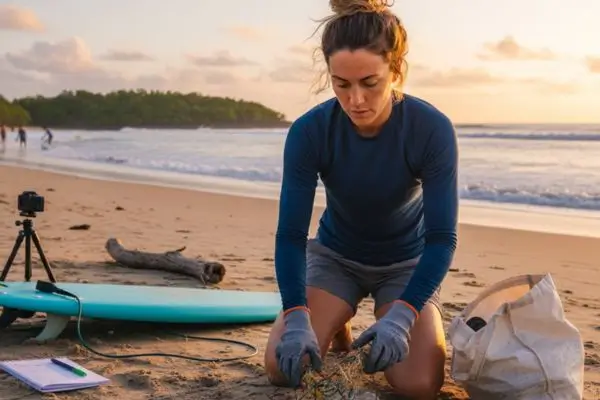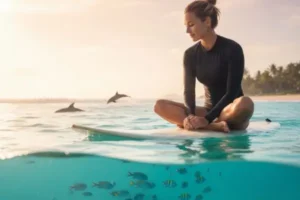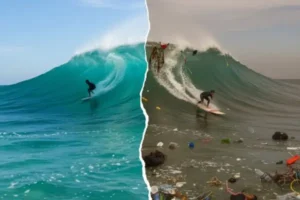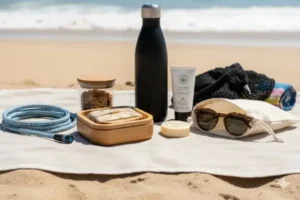Coastal communities around the world are redefining what it means to care for the ocean. Their work goes far beyond beach cleanups or conservation slogans — it’s about reestablishing a living relationship with the sea, one rooted in respect, cultural knowledge, and a shared sense of responsibility. These communities are proving that sustainable ocean care doesn’t always start with large institutions, but often with small groups of people whose lives are deeply tied to the rhythm of the tides.
The Revival of Traditional Ocean Wisdom
Long before sustainability became a global concern, many coastal societies already practiced it instinctively. Fishing villages in Indonesia, Polynesia, and Latin America managed marine life according to lunar cycles, respecting the natural pace of replenishment. Materials were reused, nets were mended, and nothing was wasted.
In places like the Philippines and the Pacific Islands, this ancestral knowledge is being revived to guide modern conservation efforts. Communities are blending traditional fishing methods with contemporary marine science, proving that ancient practices can coexist with new technologies to protect biodiversity.
This revival is more than ecological — it’s cultural. By restoring old traditions, these communities are also reclaiming identity and autonomy in an age where industrial fishing and mass tourism have often disrupted local balance.
Community-Led Conservation Efforts Around the World
Across continents, local communities are taking the lead in reshaping how humanity interacts with the ocean.
In Indonesia, small coastal villages are replanting mangroves to combat erosion and provide habitats for fish nurseries. These grassroots projects have successfully protected thousands of hectares of coastline and created sustainable income sources through eco-tourism.
In Costa Rica, women-led surf schools are combining environmental awareness with empowerment. They teach beginners how to surf while introducing them to ocean etiquette, reef preservation, and responsible travel.
On the Pacific coast of Mexico, fishing cooperatives have banned industrial nets in favor of selective fishing gear that preserves coral reefs and turtle habitats. The result has been a remarkable recovery of local fish populations — and renewed community pride.
Each of these examples highlights the same truth: lasting change begins at the local level, where people live closest to the sea and depend on it for survival.
The Role of Surfers and Conscious Travelers
Surfers and eco-travelers are playing an increasingly important role in supporting coastal initiatives. Choosing community-run surf camps, for instance, ensures that tourism revenue directly benefits local conservation programs.
Participating in beach cleanups, supporting locally made surf gear, or learning about regional conservation laws can have lasting effects. Even small gestures — like avoiding plastic bottles, respecting wildlife, and learning local customs — reinforce a culture of environmental care.
For women surfers especially, this connection goes beyond travel. It’s about building relationships with the ocean that reflect empathy, awareness, and leadership. When travelers align their actions with community values, they become part of a global network that protects the seas collectively.
Innovation Rooted in Local Action
Technology is also helping coastal communities scale their conservation work without losing authenticity. Drones are used to monitor coral bleaching, while AI tools map marine debris and track currents. However, these modern solutions are often led by people whose families have lived by the ocean for centuries.
In the Caribbean, digital mapping projects help identify areas at risk of coral loss while involving local youth in data collection. In Portugal, traditional fishing communities are using ocean sensors to manage sustainable catches in real time.
The blend of innovation and heritage is redefining what modern conservation looks like — not as an external intervention, but as a partnership between generations.
Education and Awareness from the Shoreline
Education is another cornerstone of ocean care. In many communities, schools and surf collectives are teaching the next generation about marine ecosystems through hands-on experience.
Children learn how tides work, how plastic travels through currents, and how local actions affect global oceans. These lessons transform awareness into lifelong habits. By empowering young people, these communities ensure that care for the ocean remains a living, evolving value — not just a campaign slogan.
Workshops, storytelling events, and beach-based festivals also serve as cultural anchors, reminding everyone that the ocean is not only a resource but a shared heritage that deserves to be protected and celebrated.
Global Challenges, Local Strength
While climate change and pollution remain global threats, the most innovative solutions often emerge from small coastal regions. Their adaptability, creativity, and collective spirit allow them to face challenges that larger systems often struggle to address.
In the face of rising sea levels, some communities are rebuilding homes on stilts, planting coastal vegetation, and developing early warning systems for storms. Instead of waiting for external aid, they act — quickly and collaboratively.
These examples show that sustainability is not just about funding or technology; it’s about mindset. When people view the ocean as part of their identity, protection becomes second nature.
Shared Responsibility for a Living Ocean
The health of the oceans is inseparable from human well-being. Every decision made on land — from the products we buy to the energy we use — eventually reaches the water. Coastal communities remind us that protecting the sea isn’t a distant duty; it begins with local action and global awareness.
As travelers, surfers, and citizens, we have the opportunity to learn from their example. Supporting local conservation, respecting indigenous practices, and reducing our ecological footprint are practical ways to join this collective effort.
The movement to redefine ocean care is not confined to governments or corporations. It’s alive in coastal villages, in surf schools run by women, and in the everyday acts of people who live by the sea.
These communities are teaching the world that sustainability is not just about saving nature — it’s about restoring a relationship with it. When we listen to the rhythm of the waves, honor local traditions, and act with awareness, we become part of the same current of renewal that drives these ocean guardians.
The future of ocean care, it seems, will not be written in policies alone — but in the hands, hearts, and shared stories of the people who call the coast their home.




